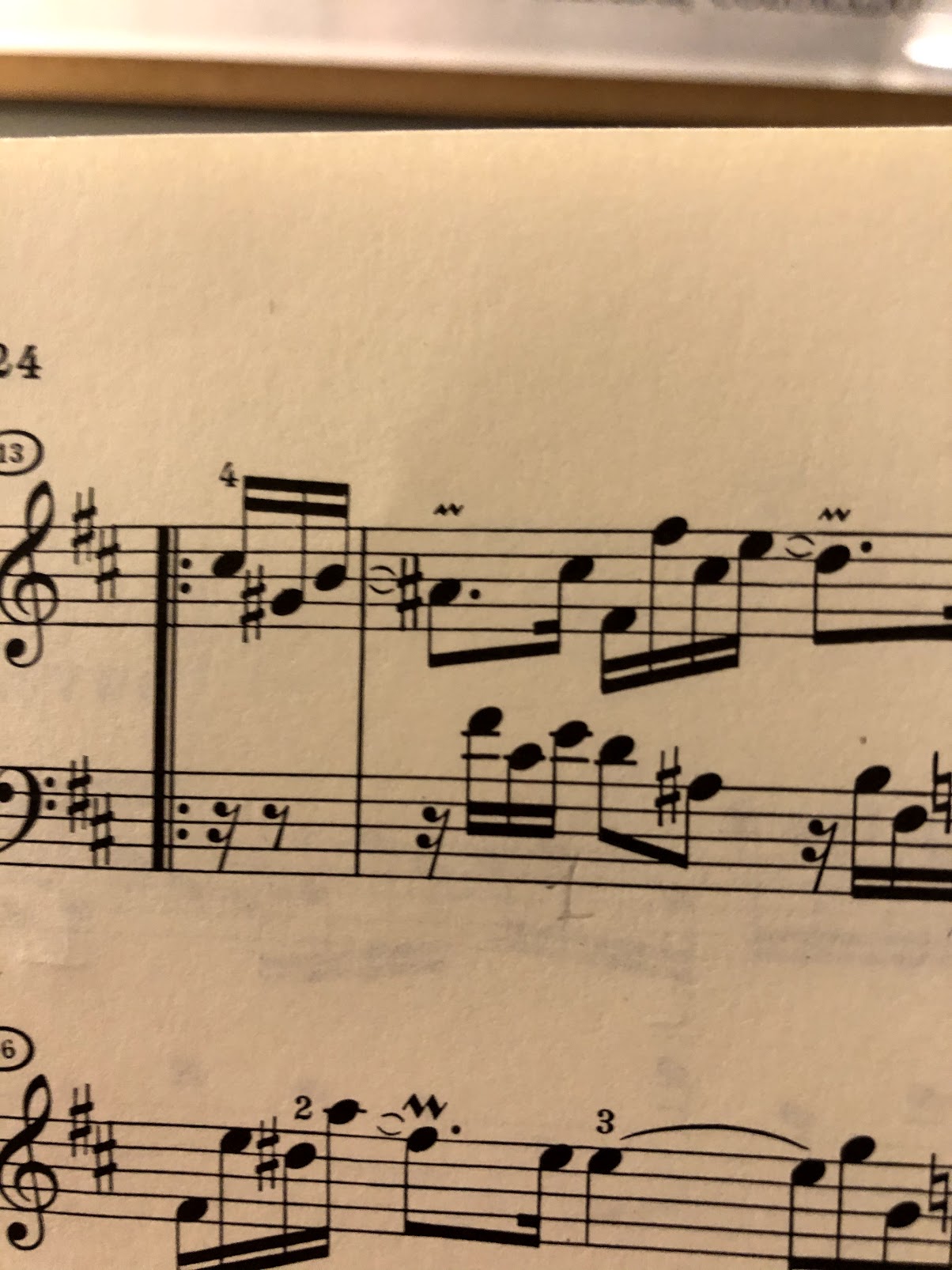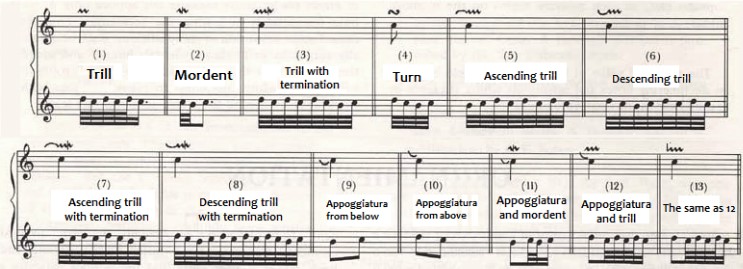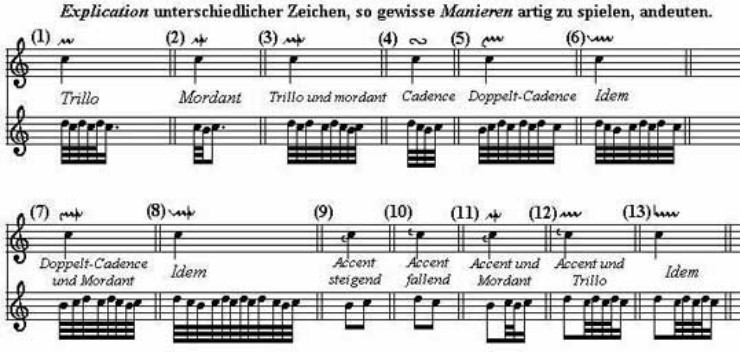I am looking at Bach's French Suite #3, BWV 814, Allemande, and the ornamentation typesetting is confusing me.
I am familiar with mordant vs. trill, and the standard description of ornaments for Bach. Here is what is confusing me:
- some ornaments are typeset smaller -- does this mean they are optional?
- there seem to be some "horizontal" parentheses next to mordants and/or trills, but not always; the position of the "ghost" (?) note is either above or below, and not related to whether this is a trill or mordant.
Here is a picture. Note the small vs. large ornamentation sizing. The "ghost" note appears above or below, both for trills and mordants.




